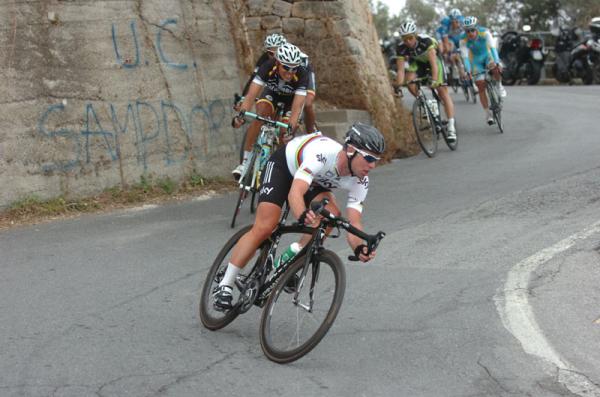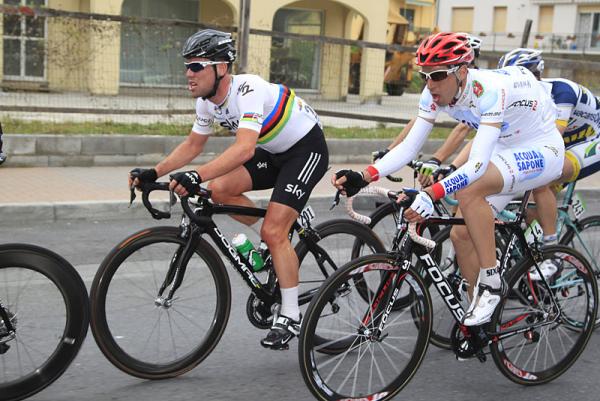Cavendish's Milan-San Remo hopes fade on Le Manie
World champion distanced with 90km to race




Perhaps fittingly given the casino that sealed San Remo's status as the Riviera resort of choice at the dawn of the last century, Milan-San Remo has often been considered something of a lottery. Its lengthy route adds an intriguing balance to the battle between sprinters and attackers, and the members of each clan must ride their luck and roll the dice over the capi that punctuate the run-in to the finish.
While being dropped on the Poggio or the Cipressa is always an occupational hazard for the sprinting fraternity, however, Mark Cavendish (Sky) must have felt as though he had been turned away at the door when he was distanced on the climb of Le Manie with over 90km still to race. That disappointment can only have been accentuated by his status as world champion - his rainbow jersey was hardly in breach of the dress code at the business end of a classic.
As is increasingly his wont when defeated, Cavendish was in no mood for talking when he rolled to a halt at the finish. He had abandoned before the Poggio and he clambered straight aboard the Sky team bus, his expression as dark as the clouds that had circled over the summit of the Passo del Turchino on Saturday morning.
Instead, it was left to his loyal teammate Bernhard Eisel to pick up the pieces and explain to the gathered reporters how the Manxman's dream of winning Milan-San Remo in the rainbow jersey had unravelled.
"He didn't have the legs, that was the only thing," Eisel said bluntly, before adding a mitigation of sorts. "He did have to change a wheel before the Turchino."
Keen to distance the sprinters and prepare the ground for Vincenzo Nibali and Peter Sagan, Liquigas-Cannondale set a fearsome pace on the 4.7km climb of Le Manie. Although more advanced in his early season form this year than in either of the previous two campaigns, Cavendish was unable to hold the wheels as the speed ratcheted up on the climb. Following his wins at Kuurne-Brussel-Kuurne and on the opening stage of Tirreno-Adriatico, it was a surprise to see Cavendish ruled out of contention so soon.
Eisel was on hand to attempt to coax him back on to the tail end of the peloton, which subsequently split in two under the impetus of the Liquigas forcing. Such was his confidence in his Cavendish's powers of reanimation in sight of the finish line that it was only in the valley afterwards that Eisel accepted that his leader's challenge was already over.
The latest race content, interviews, features, reviews and expert buying guides, direct to your inbox!
"I realised it when we were on the flat after Le Manie. On Le Manie he wasn't going too badly. They were flying up front but he was there," Eisel said. "After Le Manie, we were after catching up to the second group. He swapped bikes because he didn't feel good. In the end, we tried everything to bring back the front group, but they were flying up front. It wasn't his day."
Eisel and Sky ultimately succeeded in pacing Cavendish back up to that second group on the road, but in spite of the presence of Tyler Farrar, Garmin-Barracuda were not keen to collaborate in pulling back the leaders.
"We said that in the end that if Garmin don't pull with us, well we're not going to bring back two minutes with just three riders," Eisel explained.

Barry Ryan was Head of Features at Cyclingnews. He has covered professional cycling since 2010, reporting from the Tour de France, Giro d’Italia and events from Argentina to Japan. His writing has appeared in The Independent, Procycling and Cycling Plus. He is the author of The Ascent: Sean Kelly, Stephen Roche and the Rise of Irish Cycling’s Golden Generation, published by Gill Books.